Homebrewer's Guide to Municipal Water Testing
01/04/2024
By Robert Holland
As a homebrewer, I’m sure you have come across many comments, articles and even books talking about the importance of using high quality water for brewing the best beer you can at home. The adage I have always heard is “if the water tastes good, it will make good beer”, and I tend to agree with that sentiment. I would say that if you are starting with a municipal tap water source for brewing at home, as long as you neutralized the chlorine in it, then you have a great base to build off of. If you want to really dive into the weeds though, customizing your own water profile is a great way to perk up an already great recipe. Plus it’s fun to see how changes in water chemistry can impact the flavor of your favorite recipe! Let’s take a short look at what kind of work goes on behind the scenes at your local municipality that leads to the high quality drinking water that most of us have at our disposal.
The Safe Drinking Water Act (SDWA), established by the US Environmental Protection Agency in 1974, set the standards that all municipal water systems must follow. Whether the source is surface waters (rivers, lakes, reservoirs, etc.) or groundwater (wells and aquifers) any water system that serves more than 25 individuals must follow the rules laid out in this legislation. Each state can establish more stringent regulations that build on top of the SDWA, and the SDWA itself has been amended several times to keep up with changes in the science and public health issues that play into maintaining high standards for drinking water safety. For instance, the EPA is currently rolling out new legislation that puts lead and copper in the spotlight following the aftermath of the Flint water crisis and an ever growing body of research showing any amount of lead can be detrimental to the developing brain. But how does this apply to the home brewer you may ask?
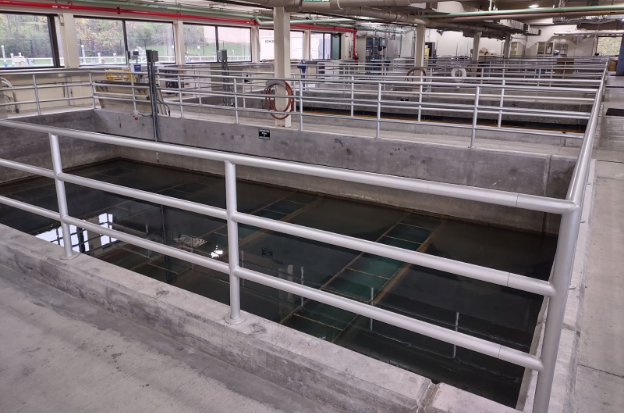
Several water filters at a municipal treatment plant
Brewing Water and Annual Water Quality Report (AWQR)
Well, the most obvious impact is that your local municipality is constantly doing work to make sure a safe, clean, consistent product is reaching your tap at home! As a drinking water quality professional myself, and a recent convert to the joys of homebrewing, I wanted to peel back the curtain on what it is that goes on behind the scenes to ensure that what you use to brew at home is just as good or better than bottled spring water or distilled water. Speaking of, both of these products are regulated by the Food and Drug Administration (FDA) and are typically less heavily regulated and tested than municipal drinking water. Plus, a lot of the bottled water products on the market actually start out as municipally treated tap water that a company then filters, adjusts or otherwise bottles up for resale! All municipalities should put out an Annual Water Quality Report (AWQR) that summarizes the yearly testing results that are done on an annual or routine basis. Starting in April of 2025, the AWQR will actually be generated biannually. You can reach out to your local municipality to get a copy of your AWQR or just Google your municipality name and state along with AWQR to see if it is posted online; some municipalities are currently better than others about updating the AWQR online. But starting in April of 2025, the online accessibility, as well as providing these reports in multiple languages, will be a requirement for all public water systems. This report should list the yearly minimums, maximums and averages for things like chlorine, disinfection byproducts, total coliform and E. coli results, as well as certain mineral values that are useful to the home brewer, like calcium, chloride, sulfates, magnesium and others, depending on the detail level of the report. The municipality is only required to report a list of primary contaminants as dictated by the EPA and you may have to reach out to the actual water plant staff if the report doesn’t contain all the fine grain chemistry data and ask for supplemental data for secondary contaminants for the full picture.
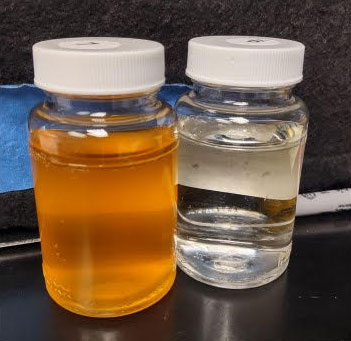
Another service your local municipality may offer is to have a technician come out to your home and run a water quality test. This may be more easily scheduled in larger water systems where there are most likely dedicated staff whose primary job is conducting water quality tests throughout the distribution system on a weekly or daily basis. For instance, the city I work for has a lab technician who tests, samples and collects over 200 samples per month from our distribution grid. Our routine water quality test consists of what your free or total chlorine concentration is, your pH and temperature at the time, conductivity, turbidity and also a sample for determination of microbiological contamination of total coliforms and E. coli. The photo above shows a sample vessel that is positive for total coliforms, as indicated by the amber color as compared to the sample vessel on the right that is still clear. Depending on your local municipalities setup and resources, they may test for more or less items, but at minimum they should be able to test for chlorine, turbidity, pH and microbiological factors. There may be a small charge associated with the test, but it should be much less than what an independent environmental lab would charge for the same analysis. It also doesn’t hurt to ask about chemistry testing for key brewing ions like calcium, chloride and sulfate at the time you are scheduling your test, as the municipality may be happy to test your location if they can, especially if they run their own chemistry in house vs sending samples off to contract labs for analysis. But it is worth noting that if you have your AWQR data, these kinds of ion concentrations rarely fluctuate in the distribution system.
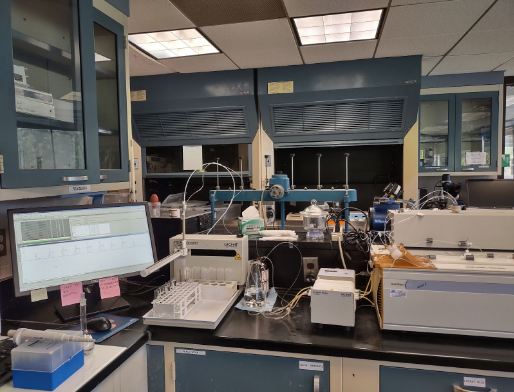
Speaking of contract labs and conducting your own tests for various brewing chemistry related items, it is worth keeping in mind the methods that are used for the determination of those ion concentrations in drinking water. The free at home water tests that are offered by the big box hardware stores or any company that also happens to sell water softening/filtering equipment, are often just thinly veiled sales tactics to scare people into purchasing often unnecessary and almost always, expensive water filtration equipment. If you want to get detailed testing done, make sure you look into certified environmental laboratories in your area. They will cost some money, but they will report objective results without trying to scare you into an expensive purchase. In New York State, ELAP (Environmental Laboratory Accreditation Program) certified labs are searchable from the NYS Department of Health website (https://apps.health.ny.gov/pubdoh/applinks/wc/elappublicweb/) and your state health department should have a similar list to help you find a reputable, certified laboratory. These accreditation programs ensure that all participating laboratories are independently tested on the analysis methods that they use and that those methods are approved for the analysis of drinking water. If you want to do the testing yourself at home, look into pool or aquarium test kits that use liquid reagents. The paper test strips are often unreliable as the range that they give and the difficulty of interpreting the slight variation in color often poses problems with the accuracy of the results. The pool/aquarium test kits will give you a slightly better ballpark figure, but are still nowhere close to the accuracy of a laboratory test via an approved method. If you want to really dive in depth on the methodology used to test drinking water, pick yourself up a new or used copy of Standard Methods For the Examination of Water & Wastewater. This chunky tome covers testing procedures for almost everything water and wastewater related.
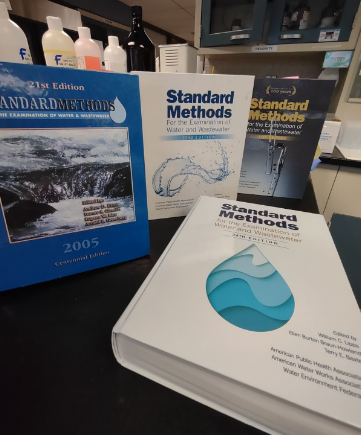
Methods can vary from lab to lab, as there are often several different approved methods to quantify or identify the target of the test. For instance, most of our routine water chemistry here in my lab is done via Continuous Flow Injection chemistry analysis on an apparatus manufactured by a company called Lachat (there are numerous other companies that produce similar apparatus as well). This apparatus consists of several different pieces of equipment all working in sync to carefully dose out the sample being tested into a series of mixing tubes and valves that precisely react the sample with the method’s various chemical reagents and buffers to produce a colorimetric response in the sample flowing through the apparatus. It then uses a specially tuned photo eye to “see” and quantify the color change by plotting the sample result against the method’s standard curve, established from a series of carefully prepared samples of a known concentration. In simple terms, there is a color change in the sample flowing through the apparatus that correlates to the quantity of what we are measuring and the sensor tracks that to provide a result. There are also several quality assurance and quality control (QA/QC) elements built into every run, to make sure that the data being produced is reliable.
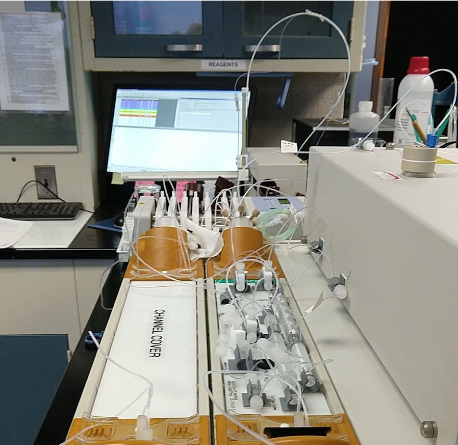
So, to conclude this little essay, I wanted to summarize the key takeaways and hopefully I have shed a little light on what kind of testing and quality assurance practices are going on behind the scenes to produce the safe, reliable drinking water that so many of us often take for granted. If you want to find out what’s in your water and you live in an area served by municipal tap water, try finding your AWQR via the web or by reaching out to your local water supplier. If you need more detailed information, try calling your local water supplier and they should share their data with you as it is a matter of public record. They may also be able to provide you with a home water quality test. If they don’t offer those services, you could always look up a certified environmental testing laboratory in your area and see what kind of services they offer. Most ions of interest to the home brewer are very stable and require little sample preservation for the accredited testing method. Calcium, chloride, alkalinity and sulfate samples can easily be collected at home and shipped via the mail with no impact on sample viability as long as the sample preservation methods and timelines are followed as dictated by the lab you are using for analysis. It is also worth noting that many of the large breweries have their own testing labs and may be willing to share data with an excited home brewer as well. So if you have a macro brewery in your city, it could be worthwhile to reach out to them as well and see what they do!
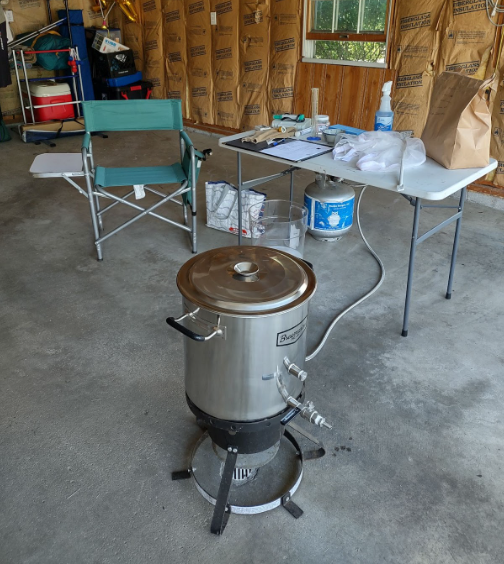
Related Products
All contents copyright 2024 by MoreFlavor Inc. All rights reserved. No part of this document or the related files may be reproduced or transmitted in any form, by any means (electronic, photocopying, recording, or otherwise) without the prior written permission of the publisher.